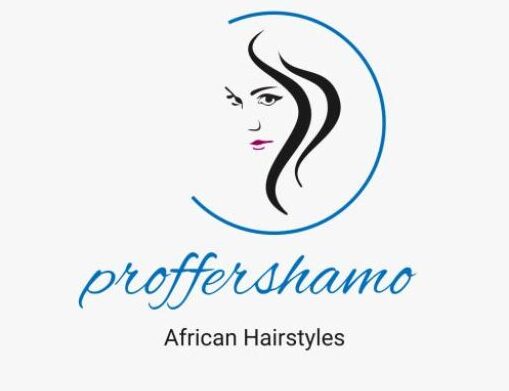As a passionate Black hairstylist named Kristin, I find immense joy in celebrating the cultural richness of hairstyles, particularly those rooted in Nigerian traditions. In this blog post, we’ll explore the beauty and significance of Nigerian protective hairstyles.


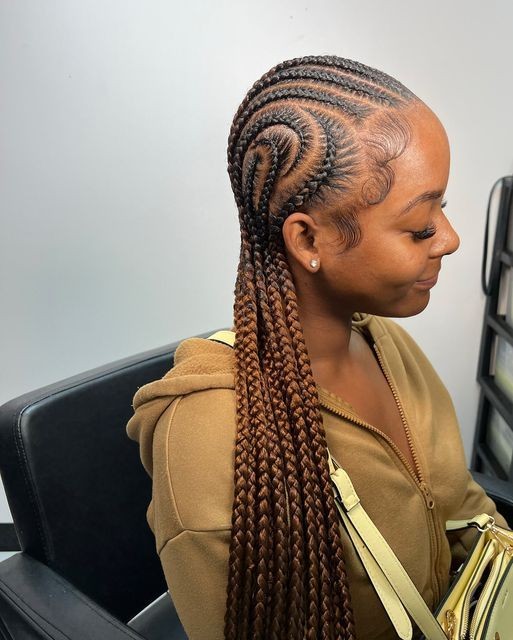



Click Here To Buy Braiding hair
Understanding Protective Hairstyles
Protective hairstyles are more than just a fashion statement; they play a crucial role in maintaining the health and strength of natural hair. In Nigeria, these hairstyles have been passed down through generations, carrying with them a sense of heritage and identity.Nigerian protective hairstyles are designed to safeguard natural hair from environmental factors, promoting growth and health. Examples include “Box Braids,” “Twists,” and “Cornrows.” These styles protect hair from breakage and damage while embracing cultural aesthetics.

The Elegance of Fulani Braids
Fulani braids, also known as tribal braids, are a stunning example of the intricate artistry found in Nigerian hairstyling. Characterized by thin, neatly woven braids adorned with beads and cowrie shells, Fulani braids not only showcase creativity but also serve as a protective style presrving the hairstyles








Click Here To Buy Braiding hair
Timeless Beauty of Bantu Knots
Bantu knots, originating from the Bantu people of Southern Africa, have become a cherished protective hairstyle in Nigeria. These coiled knots not only exude a timeless elegance but also protect the ends of the hair, preventing breakage and promoting hair health.
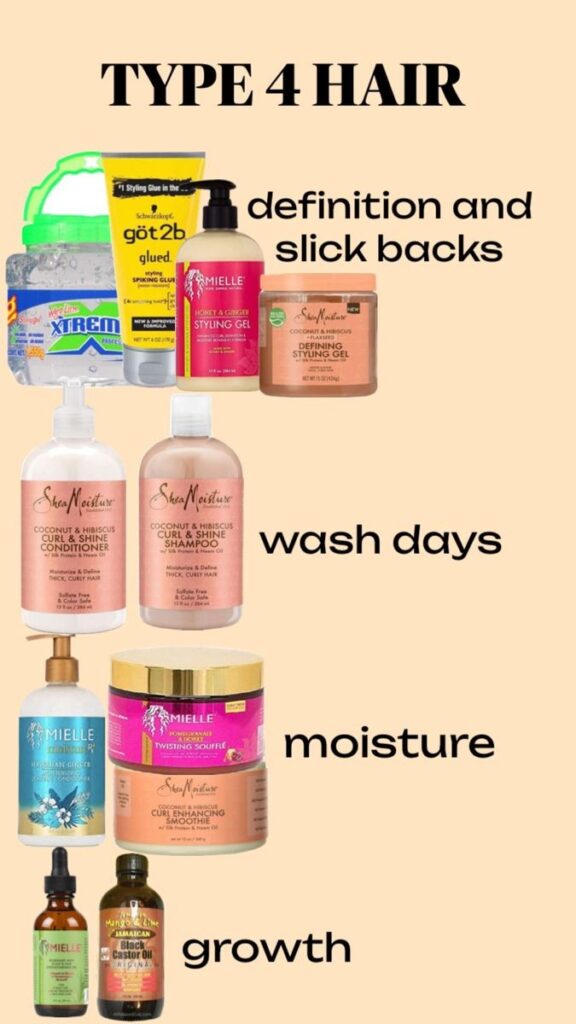
Yoruba Gele: A Cultural Statement
Gele, a large headwrap worn by Yoruba women, is a cultural icon and a protective style in itself. It not only serves as an expression of style and celebration but also protects the hair from environmental factors, showcasing the fusion of fashion and functionality.

Celebrating Diversity with Afro Puff
Afro puffs, often seen as a symbol of pride and empowerment, have found their place in Nigerian hairstyling. This versatile and protective hairstyle allows for creativity and individual expression while safeguarding natural curls from damage.




Braided Excellence: Cornrows
Cornrows are a classic Nigerian protective hairstyle that has stood the test of time. Whether in intricate patterns or simple designs, cornrows not only showcase the stylist’s skill but also provide a practical way to protect and maintain natural hair.

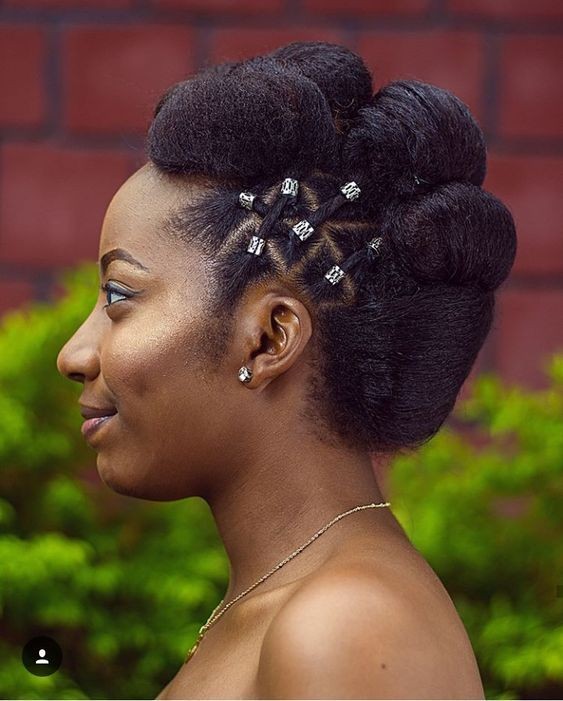
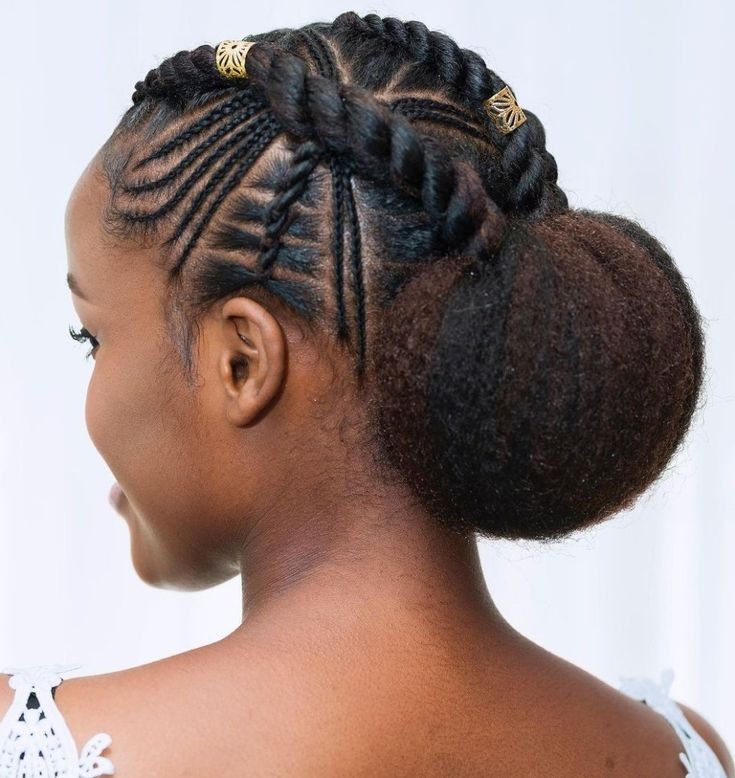

Ghana Cornrows Design With Ombre Hair
Ghana Cornrows with Ombre Hair involve braiding intricate cornrows with the addition of ombre-colored extensions. This style blends Ghanaian braiding tradition with modern ombre trends, creating a vibrant and stylish look.




Fulani didi hairstyle with attachment
Fulani Didi hairstyle with attachment involves incorporating extensions into the traditional Fulani braids, enhancing length and styling possibilities. This variation adds a modern twist to the classic Fulani Didi, combining cultural elements with contemporary flair.

Rainfall hairstyle with attachment
The Rainfall hairstyle with attachment is characterized by cascading braids that resemble falling raindrops. Extensions are often added for length and volume, creating a visually striking and unique look. This hairstyle is a creative blend of traditional braiding with a distinctive modern touch.




Patewo didi style with attachment
Patewo Didi hairstyle with attachment involves incorporating extensions into the Patewo Didi braids, adding length and a voluminous look. This style merges the classic Patewo Didi design with the versatility of extensions, offering a stylish and modern twist to the traditional Nigerian braiding technique.
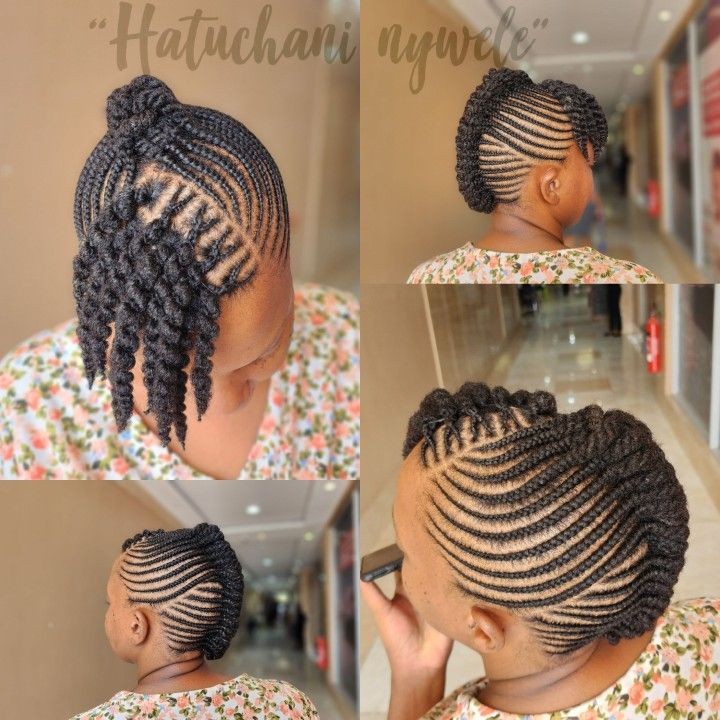
Nigerian dreadlocks hairstyles
Nigerian dreadlock hairstyles are diverse, ranging from freeform locks to meticulously styled dreads. Common styles include “Sisterlocks,” small and uniform locks, and “Freeform Dreads,” a natural and spontaneous look. These hairstyles express individuality and cultural pride, representing a fusion of modern and traditional elements within the Nigerian context.

African nigerian hairstyles
African Nigerian hairstyles are diverse, reflecting cultural richness. Braids, twists, and cornrows are common, with intricate patterns symbolizing identity, social status, or age. Styles like “gele” head wraps are popular for special occasions. Hair serves as a canvas for artistic expression and cultural significance in Nigerian communities.

Natural hair twist styles in ghana
In Ghana, natural hair twist styles include Senegalese twists, Marley twists, and Havana twists. These protective hairstyles embrace the natural texture of hair, promoting health while allowing for versatile styling. These twists are often adorned with beads or accessories for added flair.

Traditional nigerian hairstyles
Traditional Nigerian hairstyles vary among ethnic groups, showcasing rich cultural diversity. Women often wear intricately braided styles like “Irun Kiko,” “Patewo,” or “Shuku.” Gele head wraps and threaded styles are common. Men may have traditional cuts like “Afro” or unique patterns. Each style reflects heritage, status, and personal expression.
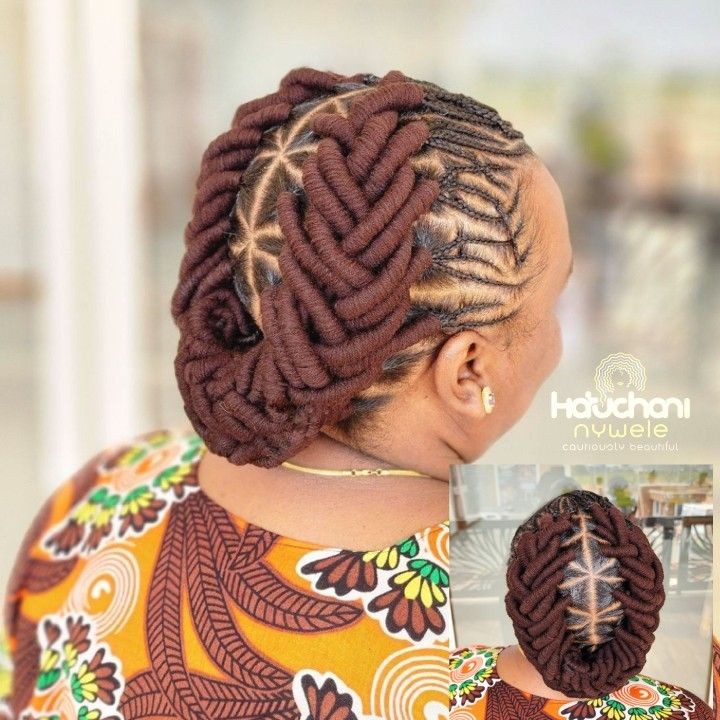
Nigerian hairstyle ghana weaving
“Ghana weaving” is a popular Nigerian hairstyle characterized by intricate cornrows closely attached to the scalp. It involves braiding extensions into natural hair, forming diverse patterns such as zigzags or curves. This stylish and protective technique is widely embraced for its durability and versatility in Nigeria.

Freetress nigerian twist crochet
Freetress Nigerian Twist” refers to a crochet braiding hair product. It’s known for its natural look and texture, resembling traditional Nigerian twists. These extensions are often used in crochet hairstyles, providing a convenient and stylish way to achieve a twist-inspired look without the need for time-consuming individual braiding.

Nigerian relaxed hair weaving styles without attachment
Nigerian relaxed hair weaving styles without attachments often involve intricate braiding techniques like cornrows or flat twists. These styles are created using the natural hair without adding extensions. Popular choices include simple cornrow patterns, intricate designs, or stylish flat twists. They offer a neat and versatile look while maintaining the natural texture of relaxed hair.

Cornrow shuku hairstyles with attachment
Cornrow Shuku hairstyles with attachments involve braiding extensions into intricate patterns, creating a raised crown or central braid (Shuku). Extensions add length and volume, allowing for various creative designs. This popular Nigerian style combines traditional cornrows with a distinctive Shuku element, resulting in a stylish and culturally significant look.

Etisalat ghana weaving all back
Etisalat Ghana weaving all back” likely refers to a Ghana weaving hairstyle with all the braids pulled back. This style involves creating intricate braids (Ghana weaving) that are neatly arranged or pulled backward. It provides a sleek and polished look, often suitable for various occasions due to its simplicity and elegance. Note that the term “Etisalat” might be a reference to a specific pattern or design within the weaving.

Knotless box braids ghana
Knotless box braids with a Ghana weaving technique involve creating box braids without a noticeable knot at the roots, leading to a more natural and less tension-filled style. This combines the protective benefits of box braids with the comfort of Ghana weaving, resulting in a trendy and comfortable hairstyle.



Ghana didi hairstyles
Ghana Didi hairstyles are tight, intricate braids close to the scalp, often forming geometric patterns. Popular in Ghana and West Africa, Didi styles vary, featuring creative designs like zigzags or curves. This protective and stylish technique showcases cultural expression and hair artistry.


Didi hair style all back
Didi hairstyle “all back” involves tightly braiding hair close to the scalp and pulling the braids backward, creating a sleek and neat look. This style is characterized by the braids flowing towards the back of the head, providing a classic and elegant appearance.


Nigerian didi hair styles
Nigerian Didi hairstyles involve tightly braiding hair close to the scalp, often with intricate patterns. Popular styles include “All Back,” where the braids are pulled backward, and “Shuku,” featuring a central braided crown. Didi styles reflect cultural diversity and are known for their elegance and versatility in Nigeria.
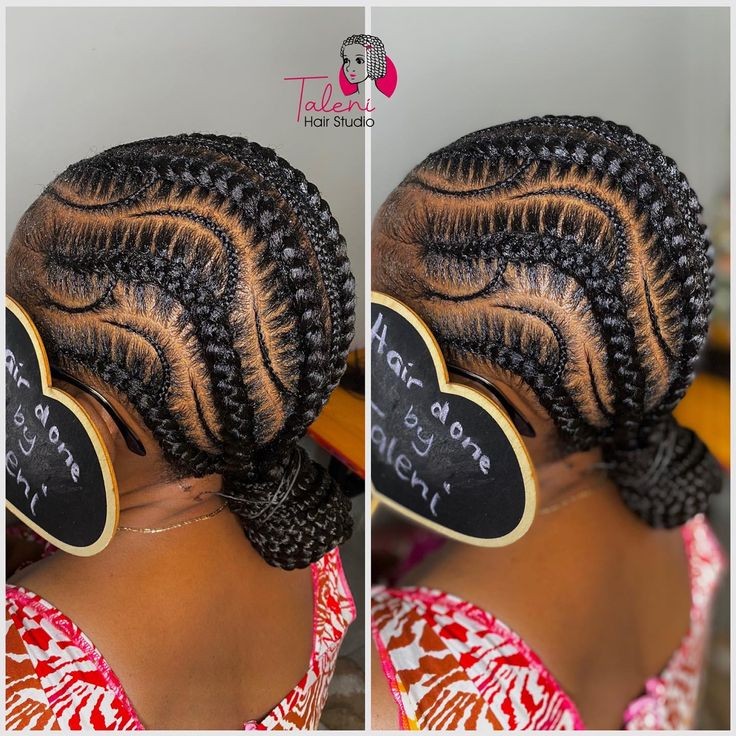

Didi Hairstyles Without Attachment
Didi hairstyles without attachment in Nigeria typically involve tightly braided patterns without adding extensions. These styles showcase the natural texture of the hair and may include variations like “All Back,” “Shuku,” or other creative designs. Didi styles without attachments offer a simple, elegant, and low-maintenance option for those who prefer a natural look.




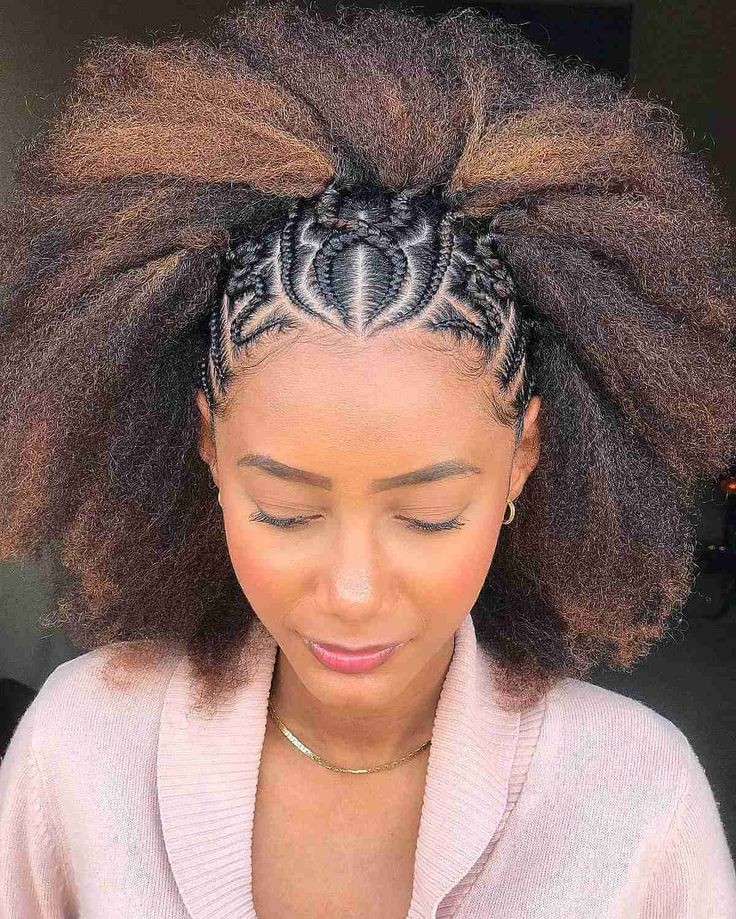



Rainfall hairstyle with attachment
The “rainfall” hairstyle with attachment typically features long braids or extensions arranged in a cascading manner, resembling the flow of raindrops. These braids start shorter at the top and gradually become longer as they move down, creating a visually striking and unique effect. It’s a stylish and creative choice often seen in African hair fashion.


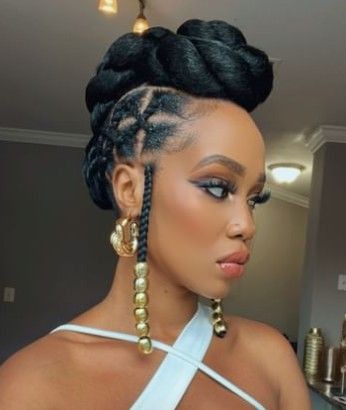

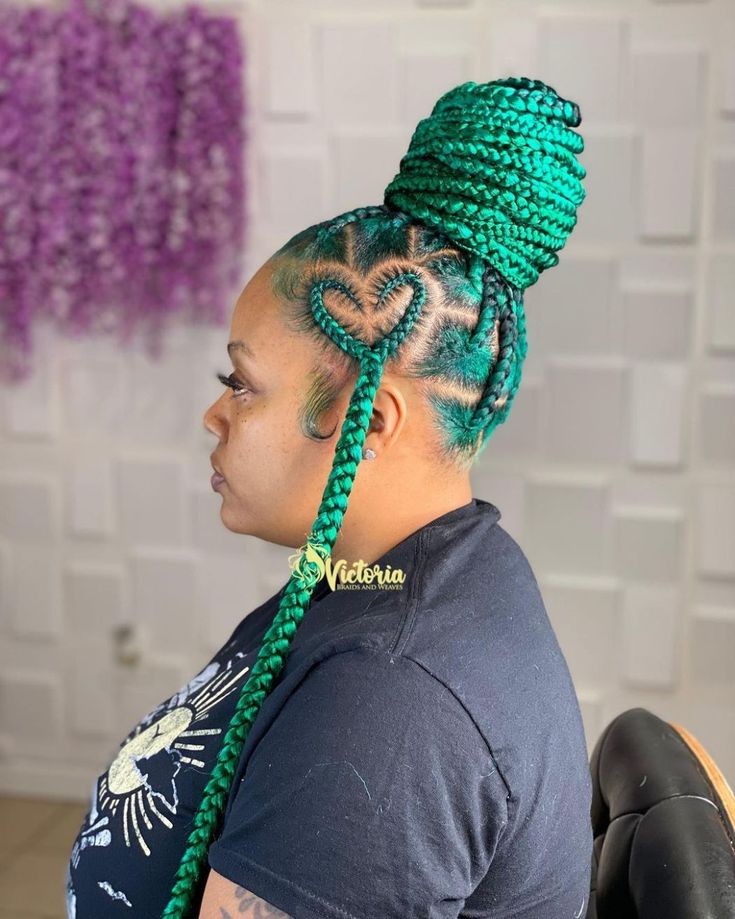



Tribal-braids
Tribal braids refer to a style of braided hair that draws inspiration from the traditional braiding techniques of various African tribes. These braids are often characterized by intricate patterns, geometric shapes, or tribal-inspired designs. The style celebrates cultural heritage and creativity, offering a unique and visually appealing look








Two Shuku Ghana Weaves with Attachment
“Two Shuku Ghana Weaves with Attachment” involves creating two distinct braided crowns (Shuku) using the Ghana weaving technique, incorporating extensions for added length and volume. This style combines the elegance of Shuku with the intricacy of Ghana weaving, resulting in a fashionable and culturally inspired hairstyle.
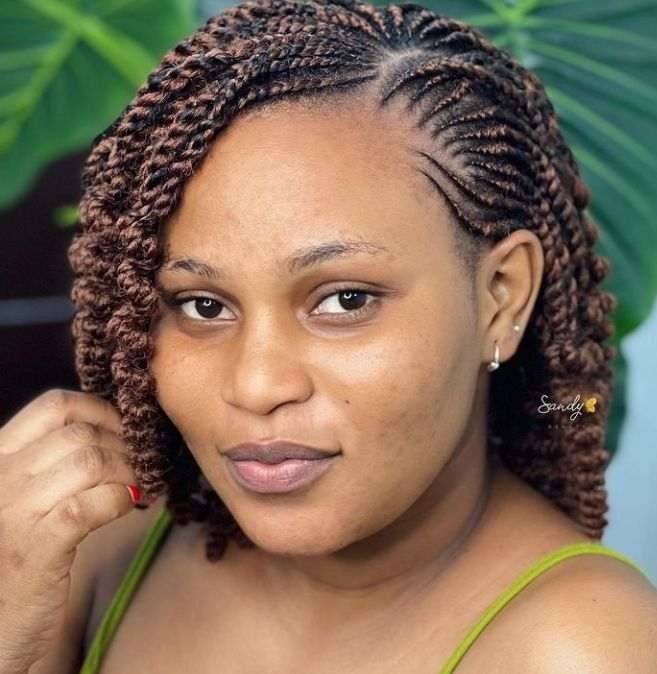

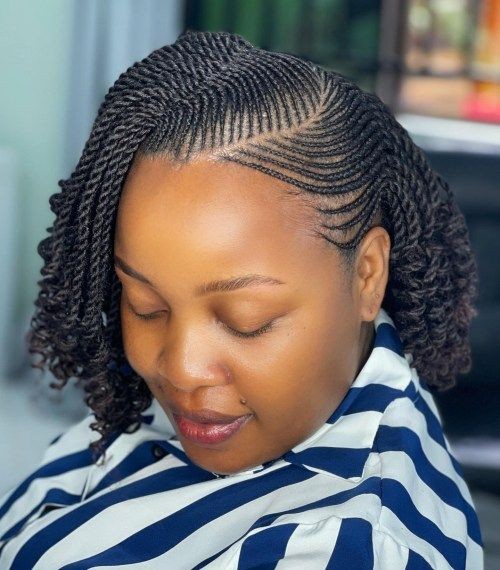

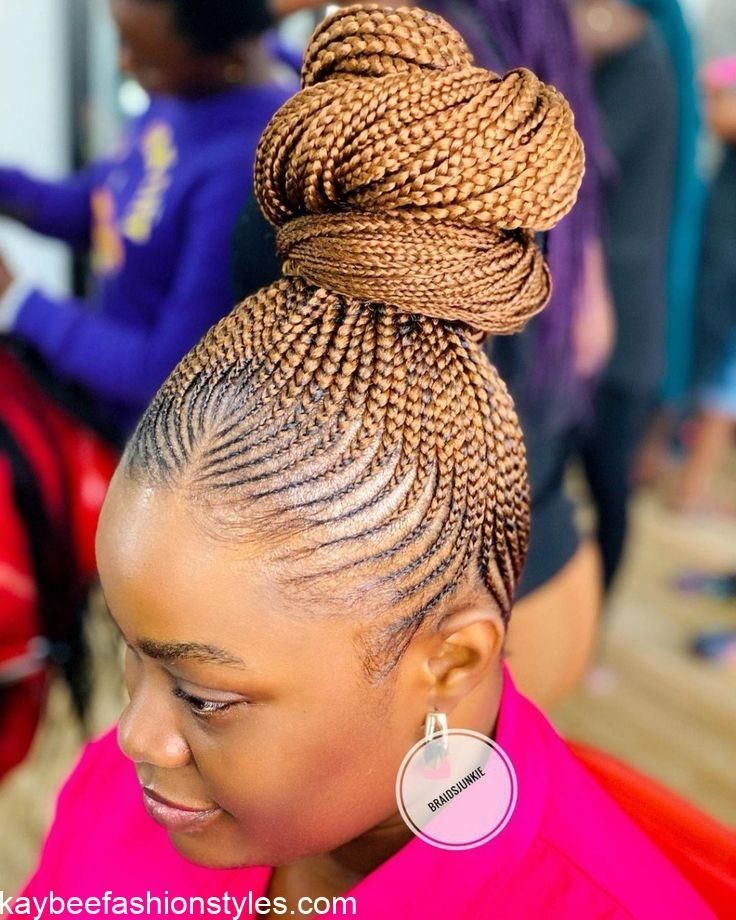



Patewo hairstyle with attachment in ghana weaving
Patewo” hairstyle with attachment in Ghana weaving involves incorporating extensions into the traditional Patewo style. Patewo typically features a central raised braid with intricate patterns. With the addition of attachments in Ghana weaving, this hairstyle gains length and volume, allowing for more creative styling while maintaining the distinctive Patewo design.
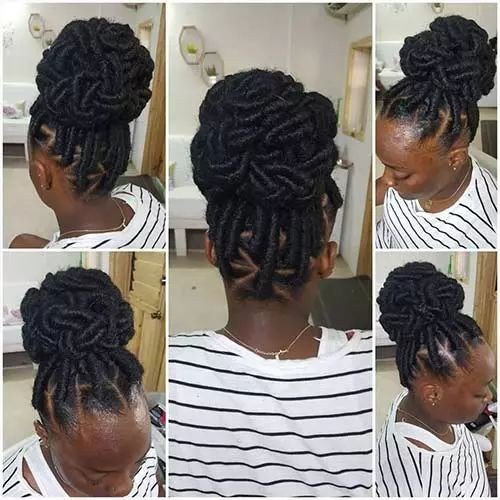

Modern koroba hairstyle
The modern koroba takes the traditional Yoruba basket braids and elevates them with contemporary twists. Think intricate cornrows forming geometric patterns around the head, culminating in woven sections that spiral upwards, mimicking the original koroba shape. Accessories like beads, threads, and even charms can add a personalized touch, making this a head-turning style rooted in rich cultural heritage but with a fresh, modern vibe.






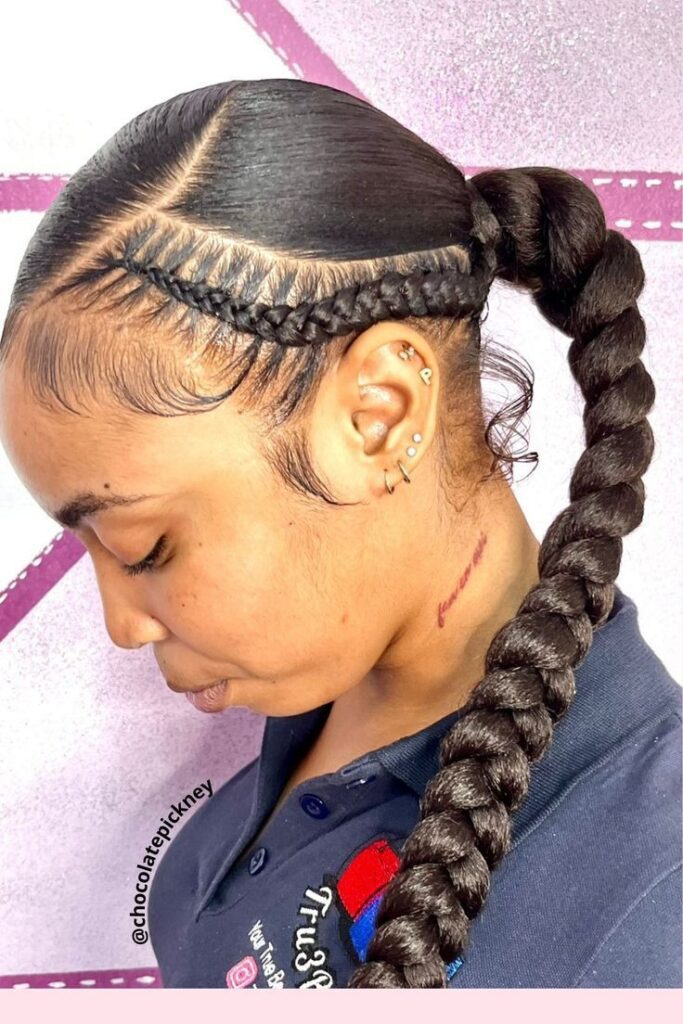

Didi hairstyles without attachment
Didi hairstyles without attachment involve tightly braided patterns close to the scalp, showcasing the natural hair’s texture without added extensions. These styles, like “All Back” or “Shuku,” offer a simple, elegant, and low-maintenance look, emphasizing the beauty of the individual’s hair.
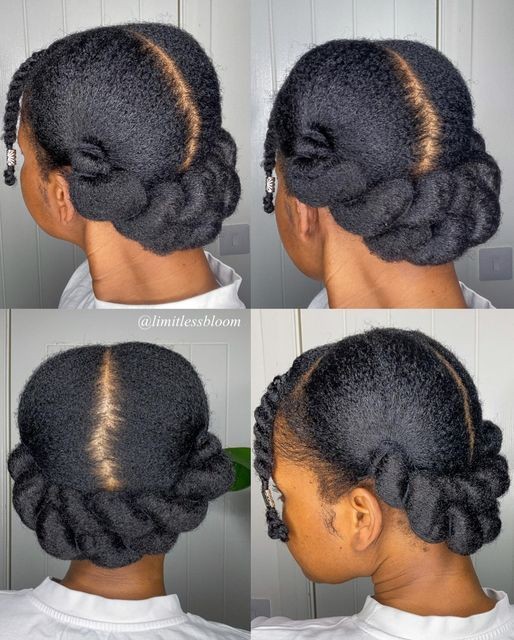

latest patewo ghana weaving
“Patewo Ghana weaving” involves intricately braiding the hair close to the scalp in a raised pattern, creating a central crown-like design. This Ghana weaving style, known as “Patewo,” showcases cultural elegance and often incorporates extensions for added length and volume.


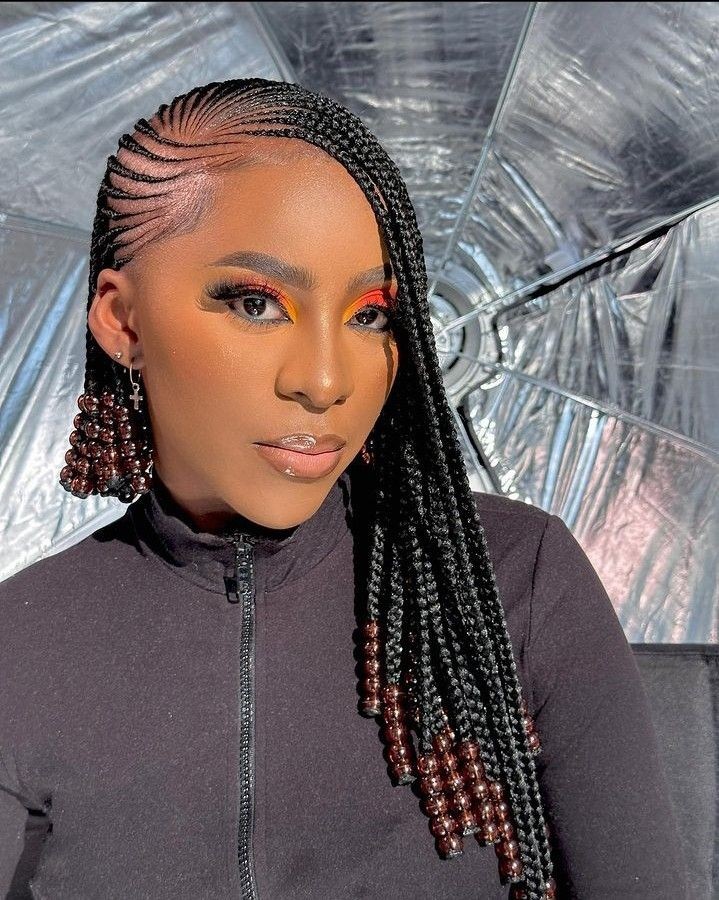

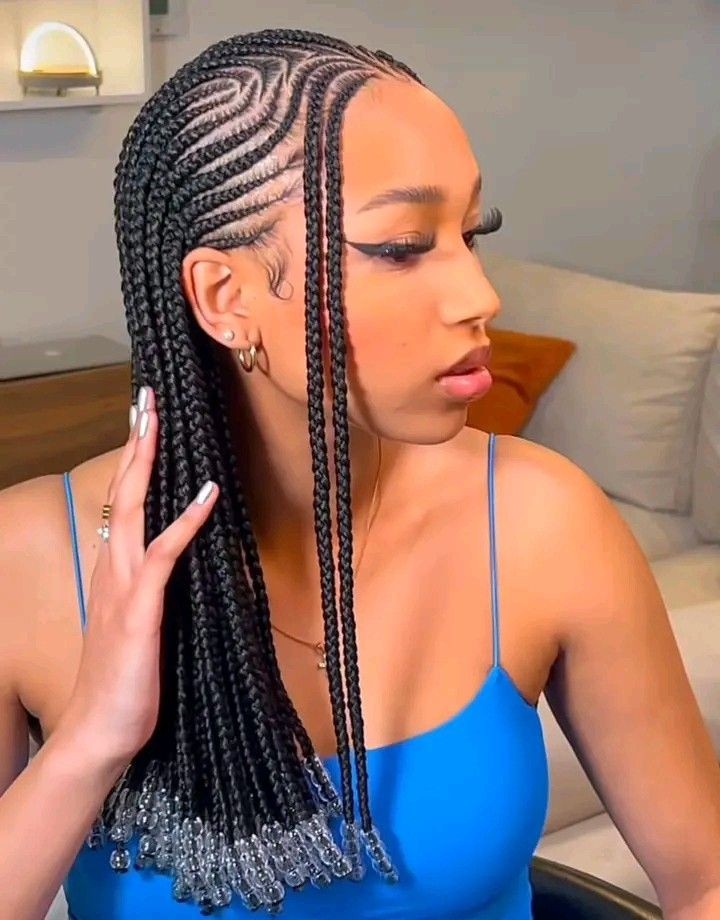



Love come down hairstyle
Love come down: Cornrows framing the face cascade into loose braids, flowing freely down the back like a waterfall. Think romantic and elegant with a touch of whimsy.It’s a versatile style that can be dressed up or down, making it suitable for both everyday wear and special occasions.








Wonuola hairstyle
Intricate cornrows woven into geometric patterns on the scalp, resembling woven mats. Think braids transformed into stunning artwork!. It’s a striking and eye-catching style that’s perfect for special occasions or those who want to make a statement




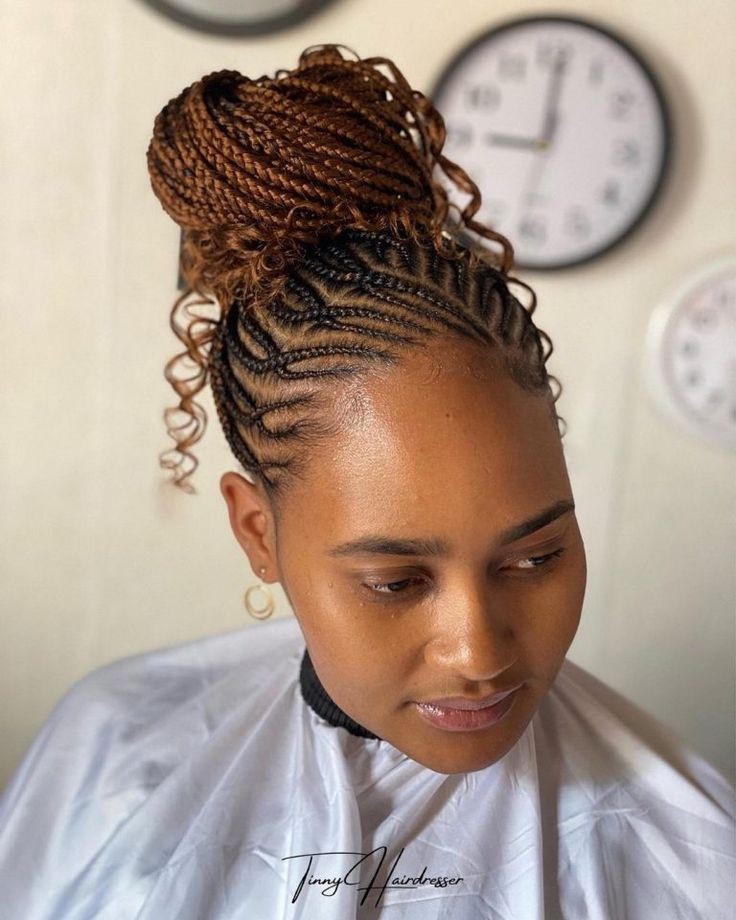



Shuku ghana weaving styles
Shuku Ghana weaving styles involve creating a central braided crown (Shuku) with intricate patterns using the Ghana weaving technique. This style is known for its elegance and versatility, combining the raised braid with the detailed weaving characteristic of Ghanaian hairstyling.








Banana shuku hairstyle
Banana Shuku is a hairstyle that involves creating a single, long, and curved braided crown resembling the shape of a banana. It’s a stylish variation of the traditional Shuku, showcasing creativity in the arrangement of the braids. This hairstyle is popular in African cultures, known for its unique and eye-catching design.
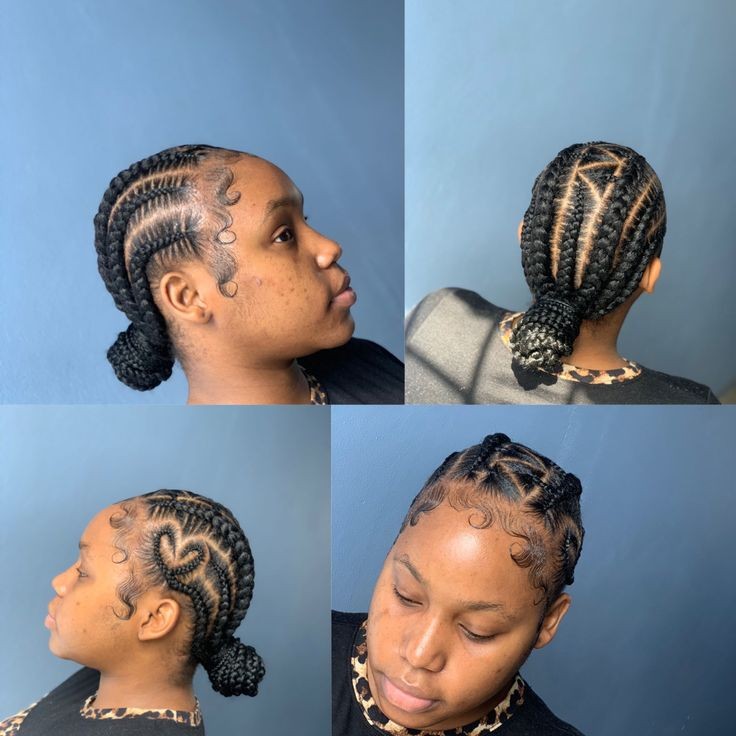

Childrens ghana weaving hairstyles
Children’s Ghana weaving hairstyles are often characterized by intricate braids close to the scalp. Common styles include simple cornrows, zigzags, or creative patterns. These hairstyles are practical, easy to maintain, and can be adorned with beads or accessories for a playful touch. They provide a neat and stylish look for kids.


Shuku hairstyle with attachment
Shuku hairstyle with attachment involves creating the traditional Shuku, a central braided crown, by incorporating extensions for added length and volume. This style combines the classic elegance of Shuku with the versatility and creativity achieved through the use of braiding extensions or attachments.


African twist braids hairstyles
African twist braids hairstyles encompass various options, such as Senegalese twists, Marley twists, or Havana twists. These protective styles involve twisting extensions into natural hair, offering versatility and a distinctive textured look. The braids can be styled in different lengths and thicknesses, providing a range of options for individual preferences.


Afro updo with braids
An Afro updo with braids combines the natural volume of an Afro hairstyle with braided elements. This style typically involves creating a bun, puff, or updo using the Afro texture and incorporating braids for added detail. It’s a versatile and stylish way to showcase both the beauty of Afro-textured hair and the intricacy of braided patterns.


African threading cornrows
African threading cornrows involve using a traditional African threading technique to create cornrow braids. Instead of using synthetic extensions, the hair is threaded with natural or thread-like material. This method not only adds a unique touch to cornrows but also serves as a protective style, promoting hair health and length retention.


African Hair braiding styles
African hair braiding styles include diverse options like box braids, cornrows, twists, Bantu knots, Fulani braids, Ghana weaving, and Afro puffs. These styles showcase creativity and cultural richness, ranging from intricate patterns to voluminous, textured looks, with each carrying its own significance.


Kiko Hairstyles
Irun Kiko” or “Kiko” hairstyles are traditional Yoruba hairstyles from Nigeria. They involve tightly braided patterns close to the scalp, often forming intricate designs. This style showcases cultural heritage and creativity, with variations like “Patewo” or “All Back” that add uniqueness to the overall look.


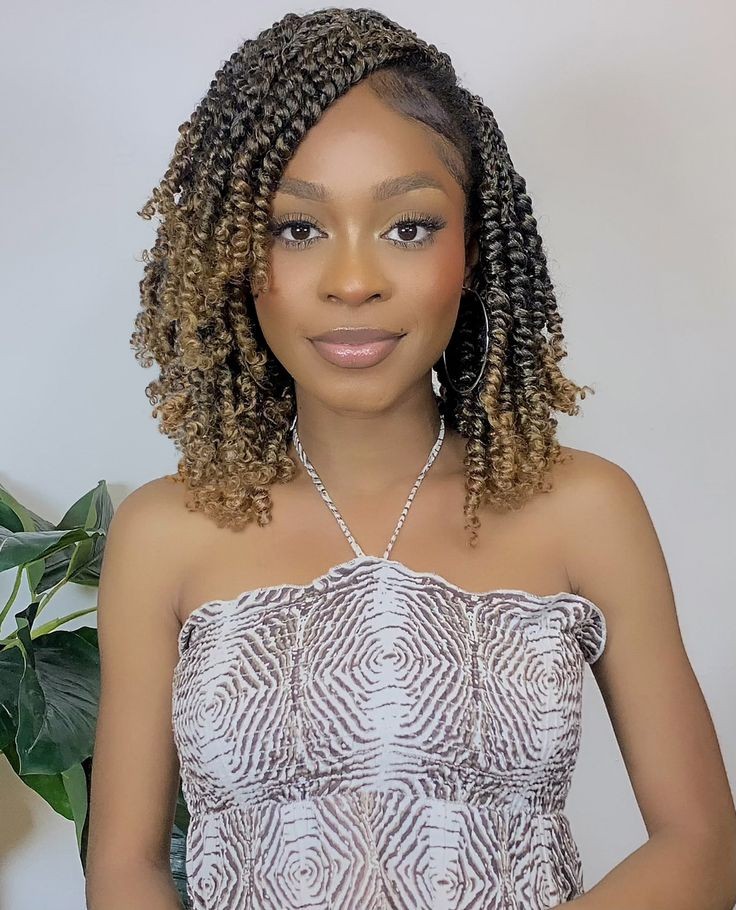

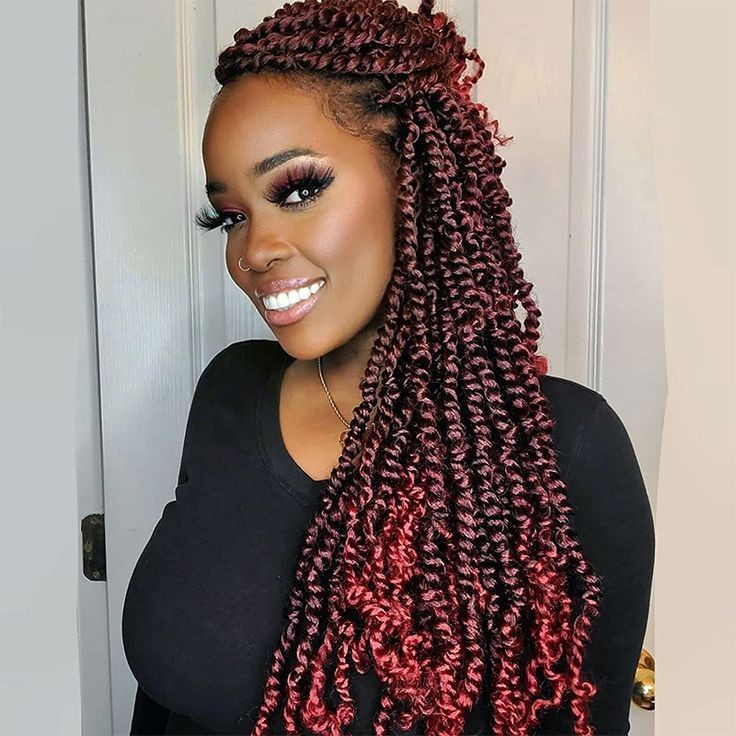

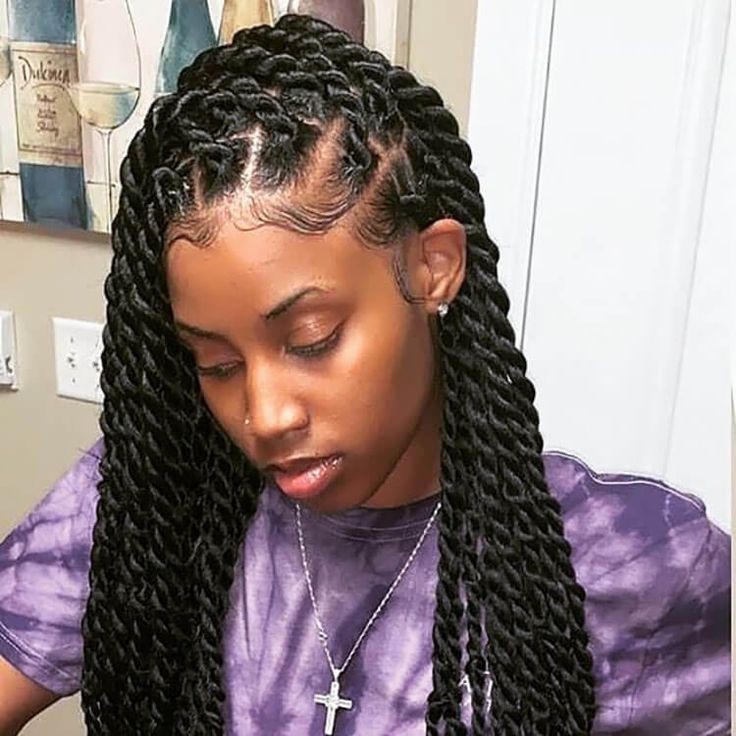

Evelyn king hair style with natural hair
Evelyn “Champagne” King’s natural hairstyle, reminiscent of a textured afro, aligns with the beauty of natural hair embraced in Nigerian hairstyles. While specific Nigerian hairstyles may vary, afro-inspired looks celebrate the unique texture and volume of natural hair, reflecting a sense of pride in one’s cultural identity and heritage.








Police cap hairstyle in nigeria
The “Police Cap” hairstyle in Nigeria involves braiding the hair into a pattern that resembles the shape of a police officer’s cap. This unique and creative style showcases the skill and artistry of Nigerian hairstylists, often incorporating intricate braiding techniques to achieve the distinctive cap-like design.
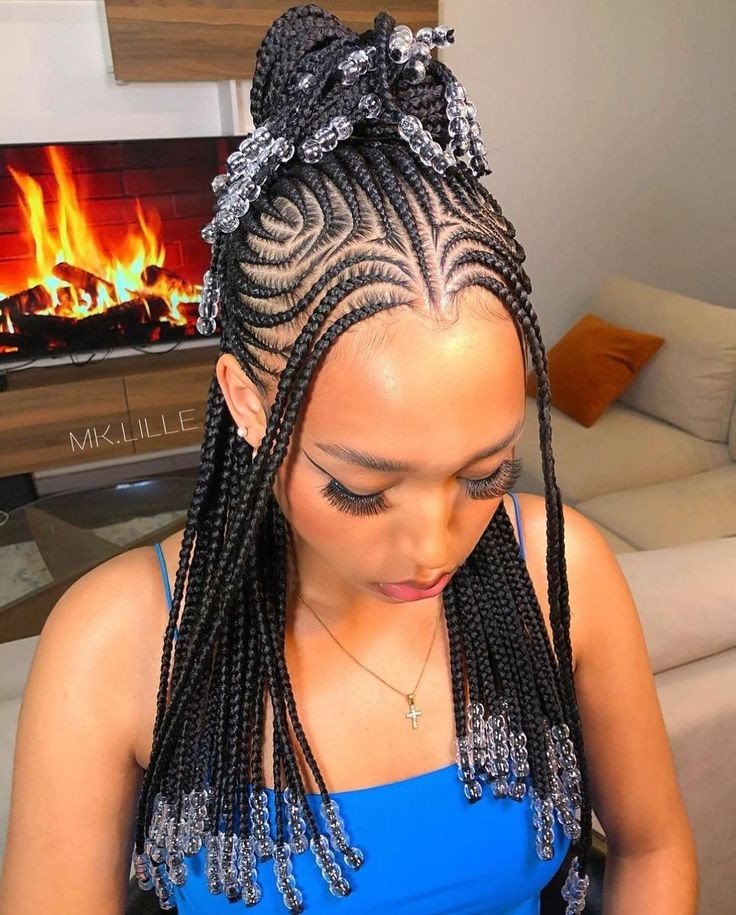

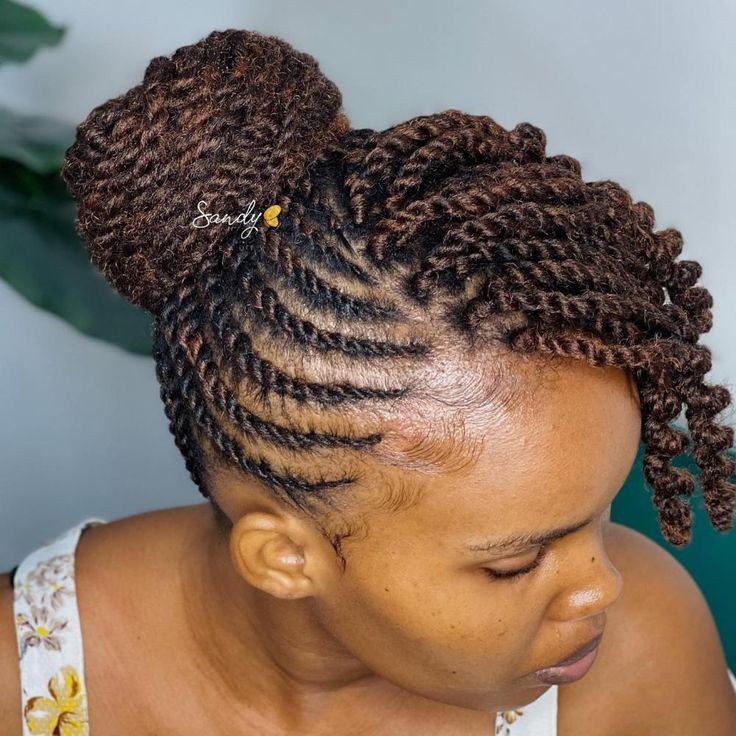





Concord hairstyle with attachment for ladies
The Concord hairstyle for ladies with attachments weaves extensions into intricate cornrows that spiral upwards from the nape, forming a mesmerizing conical shape on top. Think tiny braids transforming into an architectural masterpiece, adorned with shimmering beads or colorful threads for personalized flair. It’s a protective style that celebrates both tradition and modern artistry, turning heads with its elegance and intricate beauty.


No heat hairstyles black hair
No-heat hairstyles for black hair involve styling without using heat tools like flat irons or curlers. Popular methods include twist-outs, braid-outs, Bantu knots, and updos. These styles preserve natural texture, minimize damage, and promote healthy, heat-free hair care.
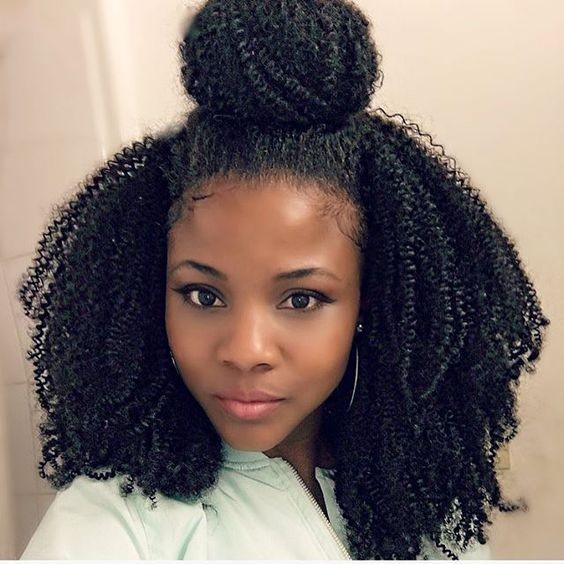



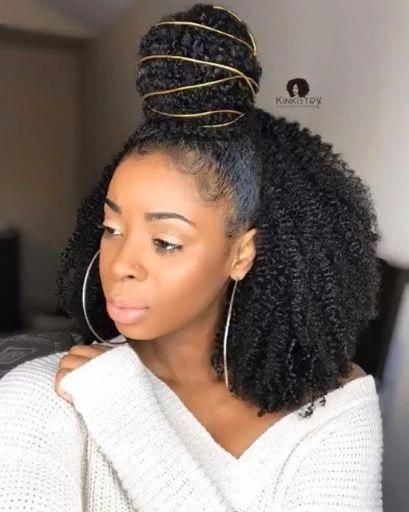

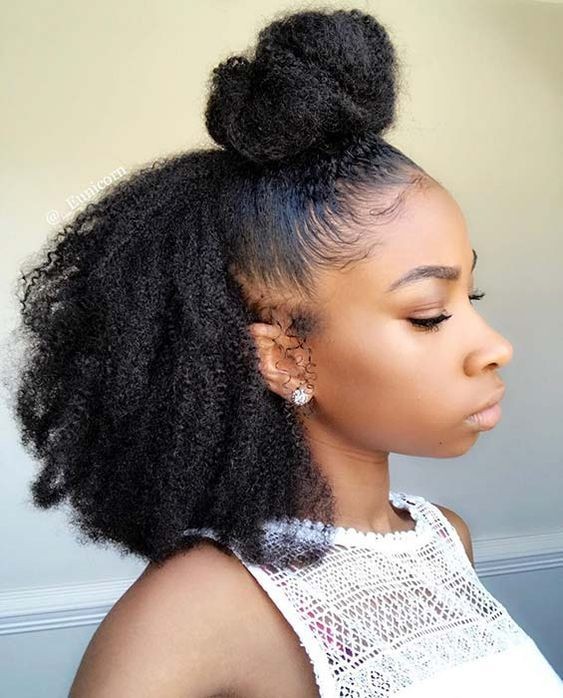

Block twist braids
Block twist braids involve creating larger, chunkier twists in the hair. These twists are typically more substantial in size compared to smaller twists, providing a bold and textured look. This style offers a balance between protective styling and a distinctive aesthetic, often chosen for its versatility and ease of maintenance.
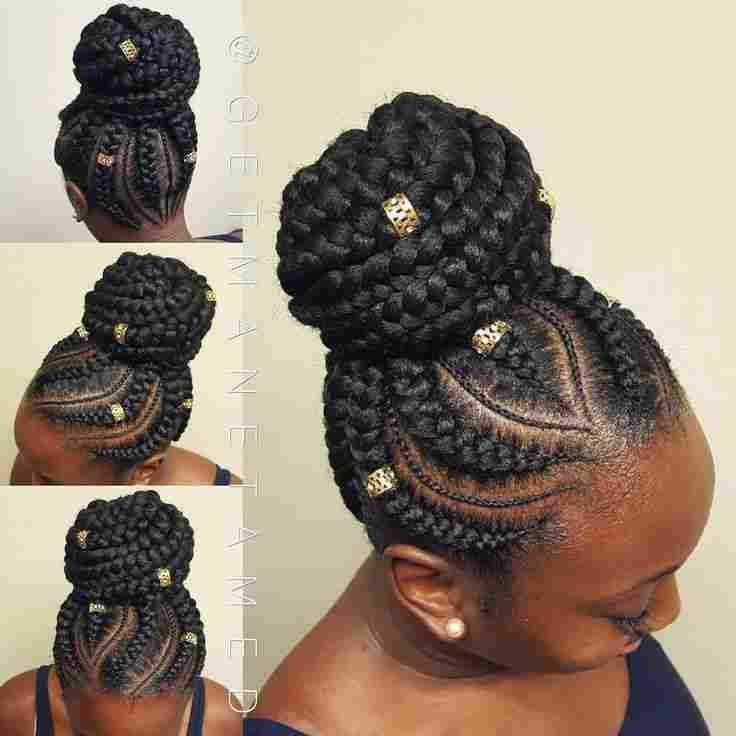

African rubber thread hair style
African rubber thread hairstyles involve using rubber threads to create intricate braided patterns. The threads are woven with natural hair, forming tight and neat styles. This method, popular in some African communities, serves as a protective style, promoting hair health while allowing for unique and creative designs.


Clap hairstyle with attachment
Imagine two braided wings taking flight! Clap hairstyles with attachments involve cornrows forming symmetrical sections that “clap” together at the crown, then cascade into flowing braids or twists adorned with vibrant extensions. Think playful, expressive, and perfect for showcasing your inner diva, whether rocking bold colors, intricate patterns, or playful charms. It’s a dynamic style that turns heads and celebrates individuality with a touch of modern flair.








Congolese cornrow hairstyles
Congolese cornrow hairstyles involve tightly braided patterns close to the scalp, often intricate and creative. These cornrows showcase cultural diversity, artistic expression, and may feature unique designs or embellishments.








Modern benny and betty hairstyle
Modern Benny and Bettys aren’t your grandma’s tightly coiled twists. Think bold, elevated versions that strut into the 21st century with confidence. Picture intricate cornrows weaving geometric patterns around the head, culminating in chunky twists that spiral upwards or cascade down like a modern, textured crown. Imagine playful pops of color woven in, metallic beads glinting off sunlight, or even charms dangling from stylishly knotted ends. It’s a protective style that celebrates both tradition and individuality, turning heads with its fresh take on a classic.


One nation hairstyle in nigeria for ladies
The “One Nation” hairstyle in Nigeria for ladies involves African braided styles, showcasing creativity with intricate patterns, often braided using natural hair. This culturally rich and diverse hairstyle reflects a sense of unity and pride in heritage, celebrating the beauty of African braiding traditions.








Cornrows hairstyles with pondo
Cornrows with pondo incorporate a raised central section, resembling a mohawk, within the cornrow pattern. This style adds a distinctive and stylish element to traditional cornrows, showcasing creativity and versatility in African hairstyling.
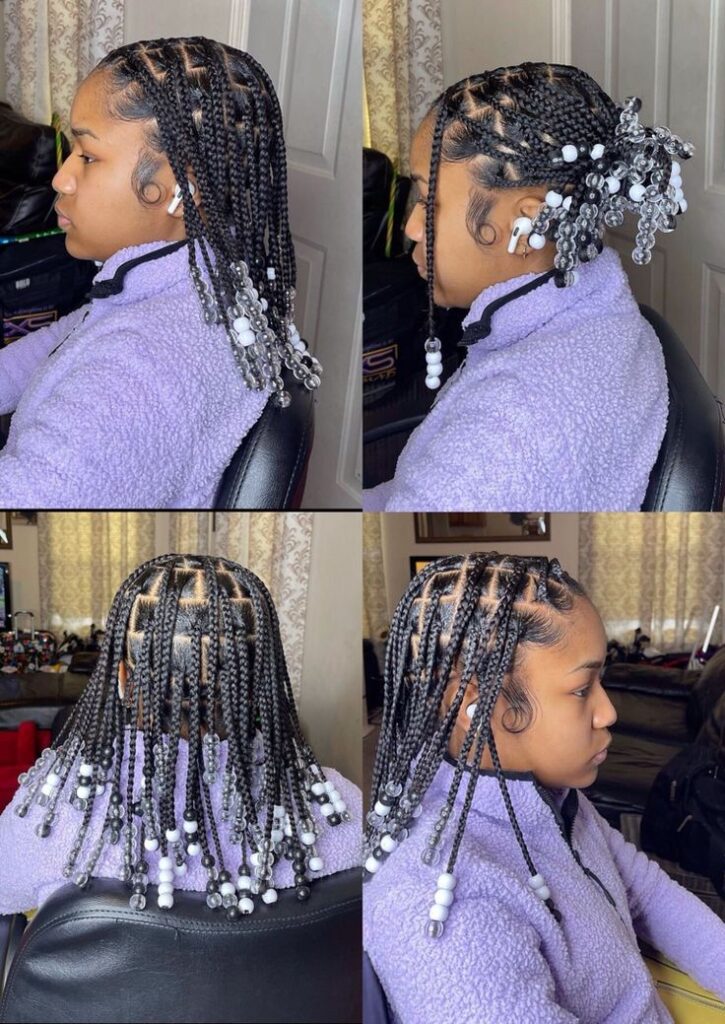

Shagari palace hairstyle with attachments
The Shagari Palace hairstyle, popular in Nigeria, incorporates attachments for added length and volume. This braided style is known for its elegance and creativity, drawing inspiration from traditional Nigerian aesthetics while embracing modern elements for a stylish look.
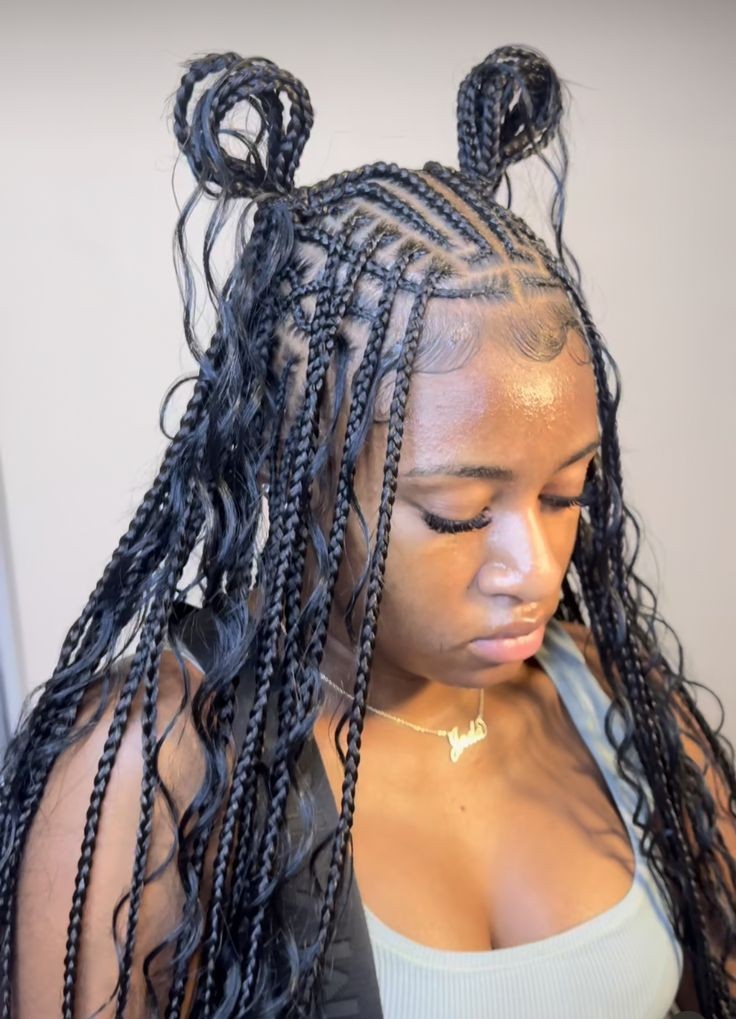







Weavon hair styles for ladies in nigeria
Weavon hairstyles in Nigeria involve attaching hair extensions to natural hair, creating versatile looks like braids, curls, or straight styles. Popular for their flexibility, weavon styles offer various options for women to express their personal preferences in hair fashion.


Virgin hair styles with attachment
Virgin hair styles with attachment typically involve using natural, unprocessed hair extensions to enhance the length and volume of the wearer’s existing hair. This method allows for a seamless blend, providing a natural appearance while offering versatility in styling options.
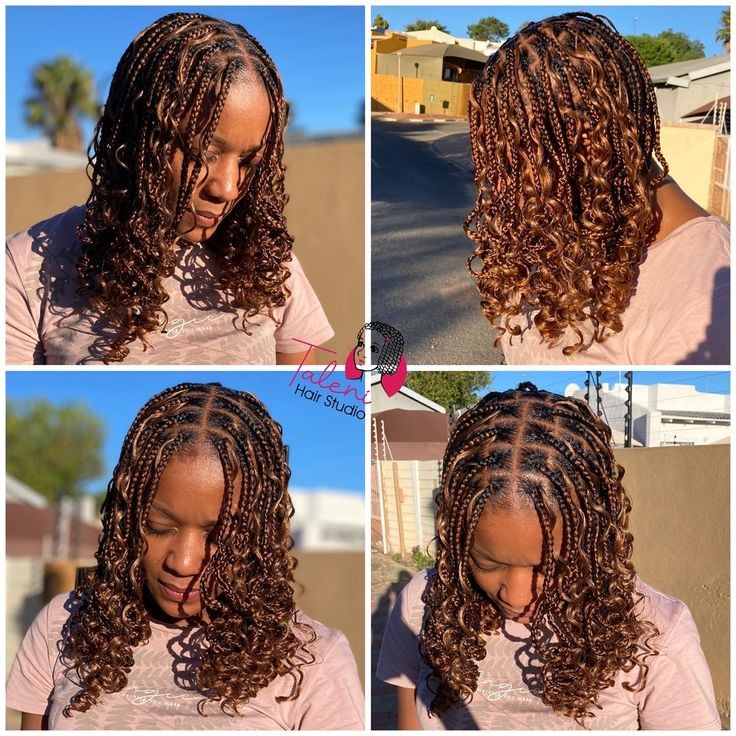

Hairstyles with attachment weaving
Attachment weaving involves weaving hair extensions into natural hair. Popular styles include box braids, Ghana braids, crochet braids, and faux locs. These hairstyles provide a blend of creativity and protective styling, allowing for diverse looks and minimizing manipulation of natural hair.
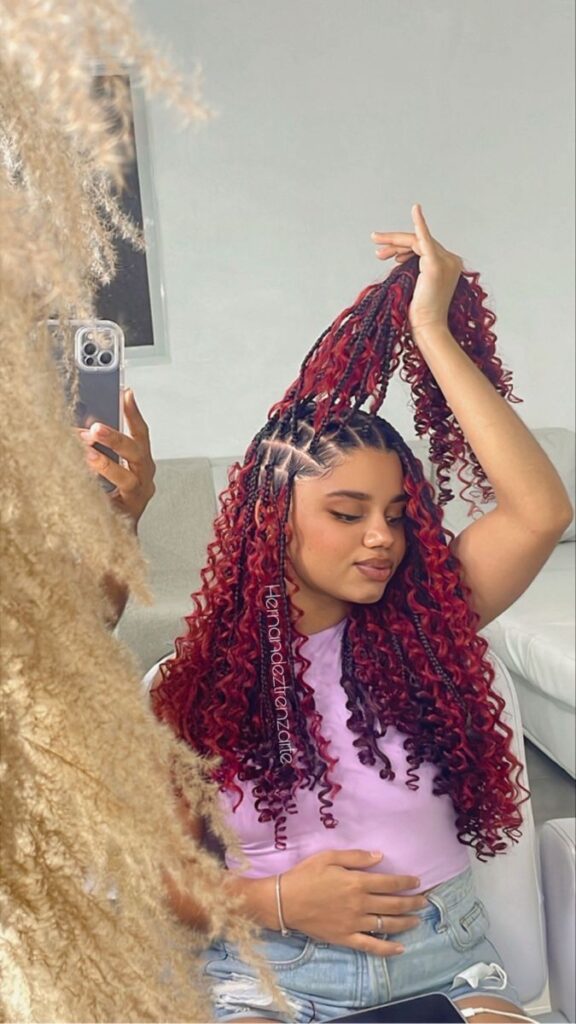

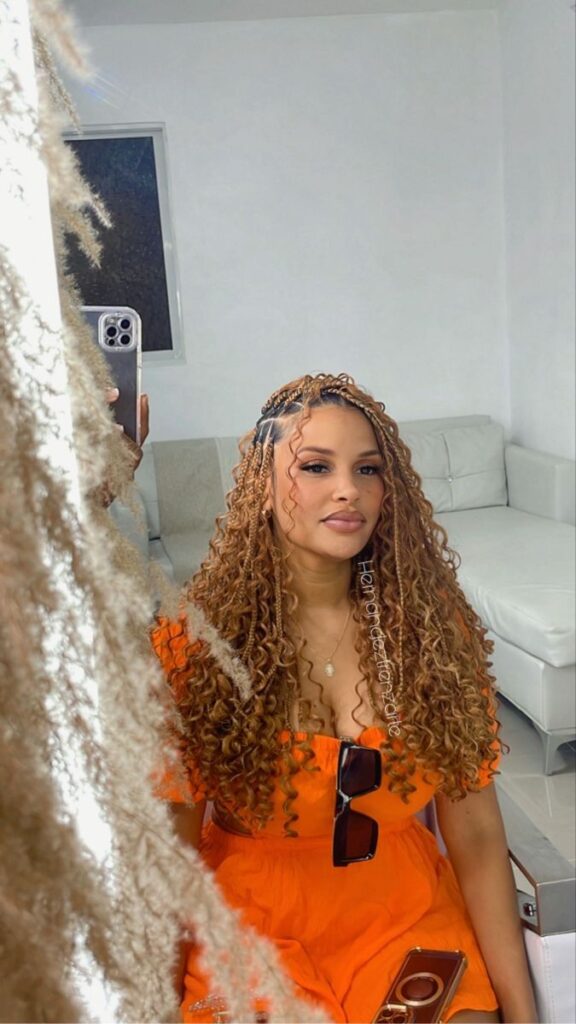



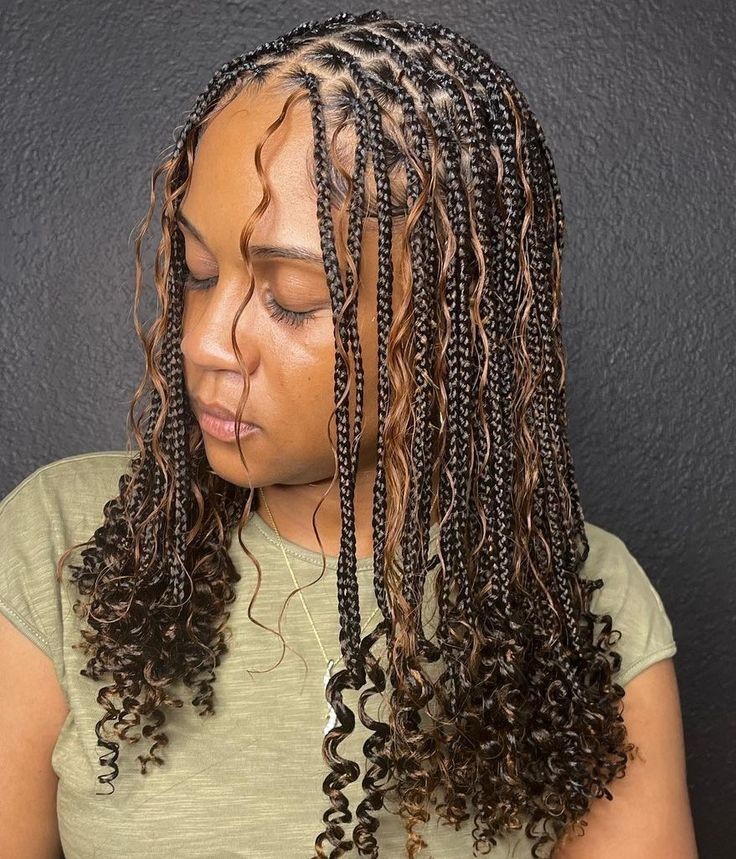

Black west african hairstyle braiding
Black West African braiding hairstyles encompass a rich cultural tapestry, including traditional styles like Fulani braids, cornrows, and intricate tribal braids. These hairstyles are not only aesthetically appealing but also often carry cultural significance, representing heritage, identity, and creativity within the West African context.


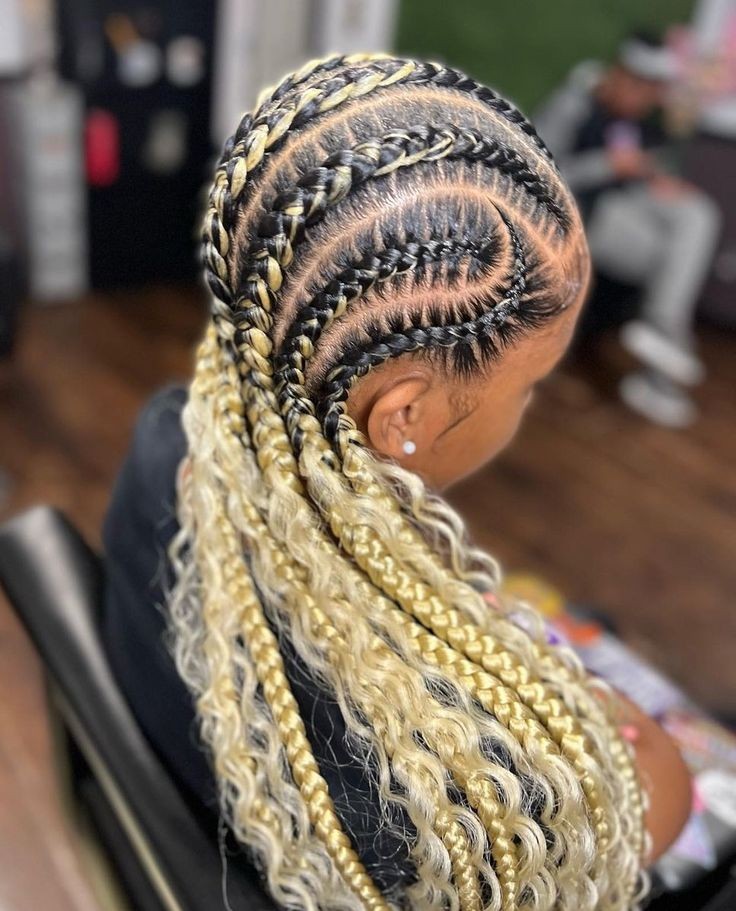





Faux locs styles in nigeria
Faux locs styles in Nigeria embrace a range of lengths and sizes, from short and medium to long and thick. Popular variations include goddess faux locs, distressed faux locs, and curly faux locs. This protective style provides a trendy and low-maintenance option for individuals seeking a unique and textured look.


Zuchu hairstyles
Zuchu, a Tanzanian artist, is known for her stylish and diverse hairstyles. She often rocks sleek and long weaves, braided styles like cornrows or Fulani braids, and occasionally opts for bold and colorful looks. Zuchu’s hairstyles reflect a mix of contemporary and traditional African influences, showcasing versatility in her fashion choices.


Tree braids are created without extensions
Tree braids involve creating small, cornrow-like braids close to the scalp. These braids are then left unbraided or “open,” resembling the branches of a tree. While traditional tree braids use extensions for added length and volume, some variations involve creating the style without extensions, relying solely on the natural hair for a simpler and more natural look.
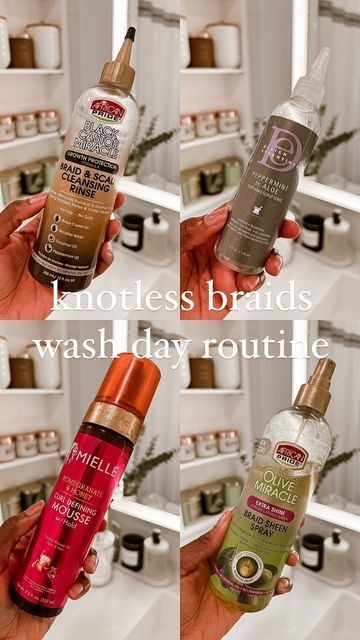

In conclusion, Nigerian protective hairstyles are a testament to the rich cultural tapestry of the nation. As a hairstylist, embracing and celebrating these styles not only showcases your expertise but also pays homage to the diverse beauty that exists within the art of hairstyling.
